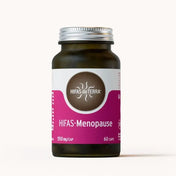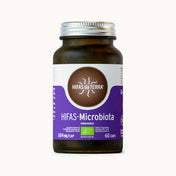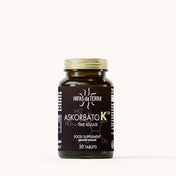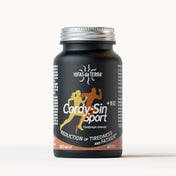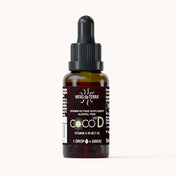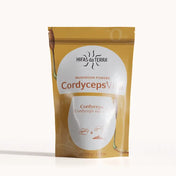Seborrheic dermatitis is a Chronic skin condition that manifests with red spots covered with white or yellowish dandruff in fatty skin areas such as scalp or face. This inflammatory skin disease preferably occurs in fatty skin and evolves in shoots. Like all skin diseases, seborrheic dermatitis causes a significant impact on the quality of life of those affected and can be accentuated by stress. But, What are the causes of this condition and how can it be prevented or reduced? Is there any natural treatment? Keep reading.
Posted on 04/26/2023.
Author: Hifas Da Terra Communication
Summary
Do I have seborrheic dermatitis (DS)?
Seborrheic dermatitis (DS) It is one Chronic skin disease which manifests itself as red spots and white or yellowish dandruff in fatty skin areas, such as scalp and face. Therefore, this condition usually occurs in seborrheic skins.
Appears in a variety of places but mainly in areas with high sebum production, like him scalp (Affected in more than 9 out of 10 cases), the groove between the nose and the cheeks or lips, and the eyebrows.
Although this disease is benign and not contagious, it is chronic and evolves in recurring outbreaks, which can have an impact on our quality of life and impact negatively on our routines.
Seborrheic dermatitis in rapid figures
We can say that they exist Few epidemiological data due to the lack of precise criteria to diagnose it. However, it is estimated that it affects 2-8% of the adult population And it usually appears 30 and 60 years With peaks around 40. DS is more frequent in men than in women.
It is a problem that mainly affects men, which, according to reports, are 6 times more likely to be affected than women.
Natural treatments
To calm the appearance of seborrheic dermatitis, certain Life habits and emotional factors They are in themselves, action levers on which it is possible to act:
- Do not abuse or avoid alcohol
- Limits the stress Whenever possible
- Rest enough (Fatigue is a triggering factor).
- Take care of you Body hygiene.
- Prohibit the use of certain fatty cosmetics (oils, lotions).
- Limit exposure to humidity, heat or low temperatures.
Relaxation, calm and a healthy lifestyle can help space or, at least, soothe attacks.
Finally, in terms of the right actions to be taken into account in case of outbreak, it is recommended:
- The use of soft products For daily hygiene: specifically for sprouting outbreaks, dermatologists recommend the Frequent use of shampoos (special or not) available in supermarkets or pharmacies to eliminate spots and reduce itching.
- The use of sun protection: Although there are evidence that suggests a beneficial effect of exposure, UV rays remain mainly an aggression for the skin.
- Hydrate, repair, deflate the skin. In Hifas da Terra We have a repair serum, Mico-Repair Serum, —I anti -inflammatory and antioxidant capacity. Mico-Repair Hydrates in depth without greasing and help in the healing and repair of skin lesions.
- Not scratch The body as much as possible so as not to maintain inflammation.
- Consult the health professional in case of doubts.
How do the DS contract?
Seborrheic dermatitis is not contagious. Instead, your incidence and severity is determined by many genetic, emotional and environmental factors.
In addition, researchers have observed that certain medical conditions increase the prevalence of seborrheic dermatitis. Some examples are people infected with HIV, They suffer Parkinson's disease or affected by Down syndrome.
Beyond these risk factors, the scientific community agrees that the appearance of seborrheic dermatitis is indirectly caused by one of the best known actors in our skin: the tallow. It is an oily substance, formed by a mixture of lipids, waxes, scales and dead cells, produced by the sebaceous skin glands.
Seborrheic dermatitis is a skin condition caused by sebum.
What is the cause of the appearance of this dermatitis?
Although the cause of the appearance of seborrheic dermatitis is not yet totally determined, A yeast called Malassezia restricta It is the main suspect. Naturally present in the hair hole, these lipophilic yeasts proliferate abnormally thanks to the sebum. Thus, the sebaceous glands (where the sebum occurs) are the perfect breeding ground for its development.
On the other hand, the researchers found an overrepresentation of M. Restricta In patients with dermatitis.
Therefore, the Alteration of the balance of our cutaneous microbioma It causes like this An inflammatory reaction which will result in skin redness as well as an important peeling of scalp cells.
What are the symptoms of dermatitis?
Dermatitis is characterized by the appearance of Red spots, more or less fat, covered with scales, white or yellowish. Once the dandruff has been detached, it shows a red color synonym of inflammation.
For the affected patient, the outbreak phases carry their share of discomfort: itching or even burning sensation. Between two outbreaks, the appearance of the skin returns to normal, but there is still something red and sensitive.
As seen before, the Seborrheic areas They are the most affected by the disease. Thus, the scalp is affected in 95% of cases and, sometimes, represents the only part of the affected body. Dermatitis also affects some areas of the ears, eyes and nose. It is rarely in the trunk or torso, since it only affects a third of affected patients.
Scalp dermatitis affects 95% of cases.
Is seborrheic dermatitis cure?
Despite all available treatments, Seborrheic dermatitis is not a disease that can be cured permanently. However, it is possible to reduce it to a large extent or make it disappear temporarily. Finally, to avoid a rapid reappearance of the condition after the attack treatment, a maintenance treatment is necessary.
Seborrheic dermatitis is one of the most frequent diseases in the world.
SUMMARY
The Ds It is characterized by peeling, especially in scalp and face and can be affected by nerves, fatigue, anxiety and depression. In order to mitigate its effects, especially during shoots, it is recommended to use lotions and serums that help handle itchy.
- Molinari e, Chosidow or,. The Syboréique de la Clinique Au Traitement dermites. Paris: Med'com, (2010). 978-2-35103-032-2.
- https://www.msdmanuals.com/fr/professional/troubles-dermatologiques/dermatite/dermite-s%C3%A9borrh%C3%A9ique
- Menzinger, S. (2011). Seborrheic dermatitis: clinical manifestations and management. Rev Med Switzerland, 289(13), 752-758.
- https://www.elsevier.es/es-revista-farmacia-profesional-3-articulo-dermatitis-seborreica-13057674
- https://www.elsevier.es/es-revista-revista-iberoamericana-micologia-290-articulo-prevalencia-especies-malassezia-asociadas-lesiones-S1130140613000211
- https://www.actasdermo.org/es-perfil-clinico-terapeutico-calidad-vida-articulo-13108526


